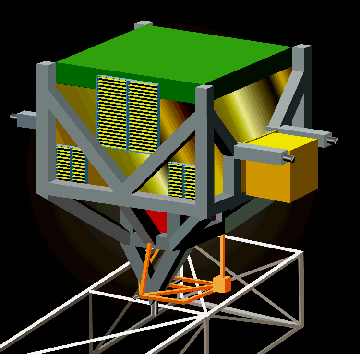This website is kept for archival purposes only and is no longer updated.
 To capture a wide variety of cosmic rays, the ACCESS instrument is equipped with two detectors, each utilizing a different technique that capitalizes on the unique properties of particular types of cosmic rays. For example, some cosmic rays are more common than others; some are faster and more energetic.
To capture a wide variety of cosmic rays, the ACCESS instrument is equipped with two detectors, each utilizing a different technique that capitalizes on the unique properties of particular types of cosmic rays. For example, some cosmic rays are more common than others; some are faster and more energetic.
 The top ACCESS instrument is a detector called the Transition Radiation Detector (TRD -- in green and metallic gold on the diagram at right), used to analyze cosmic rays with charges of +4 to +26, or lithium to iron. The TRD employs a state-of-the-art version of technology first developed in the 1960s and 1970s. The detector measures the velocity (related to the energy) of the cosmic rays, and is sometimes referred to as the "velocity" module. The top ACCESS instrument is a detector called the Transition Radiation Detector (TRD -- in green and metallic gold on the diagram at right), used to analyze cosmic rays with charges of +4 to +26, or lithium to iron. The TRD employs a state-of-the-art version of technology first developed in the 1960s and 1970s. The detector measures the velocity (related to the energy) of the cosmic rays, and is sometimes referred to as the "velocity" module.
|